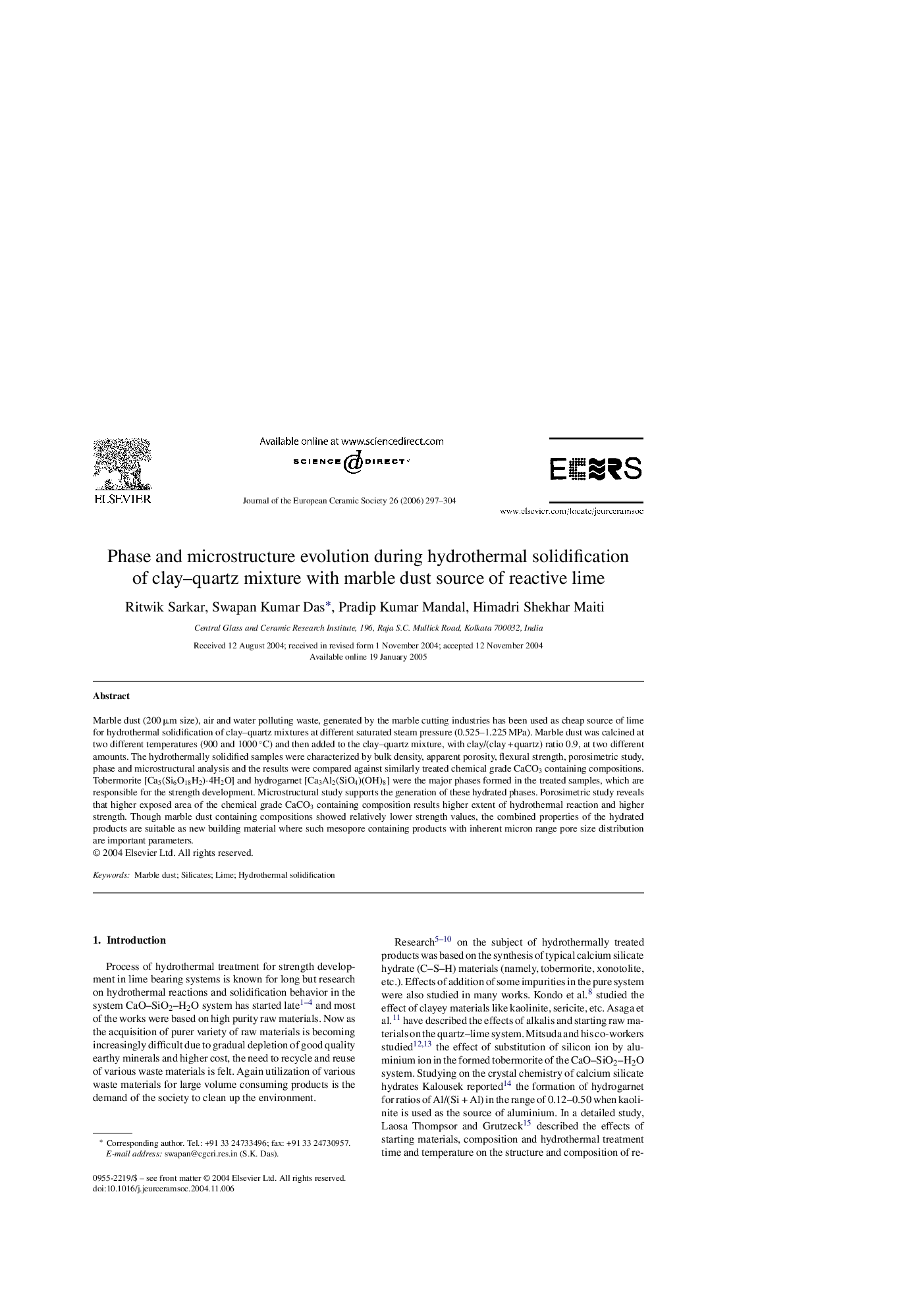| Article ID | Journal | Published Year | Pages | File Type |
|---|---|---|---|---|
| 1477399 | Journal of the European Ceramic Society | 2006 | 8 Pages |
Marble dust (200 μm size), air and water polluting waste, generated by the marble cutting industries has been used as cheap source of lime for hydrothermal solidification of clay–quartz mixtures at different saturated steam pressure (0.525–1.225 MPa). Marble dust was calcined at two different temperatures (900 and 1000 °C) and then added to the clay–quartz mixture, with clay/(clay + quartz) ratio 0.9, at two different amounts. The hydrothermally solidified samples were characterized by bulk density, apparent porosity, flexural strength, porosimetric study, phase and microstructural analysis and the results were compared against similarly treated chemical grade CaCO3 containing compositions. Tobermorite [Ca5(Si6O18H2)·4H2O] and hydrogarnet [Ca3Al2(SiO4)(OH)8] were the major phases formed in the treated samples, which are responsible for the strength development. Microstructural study supports the generation of these hydrated phases. Porosimetric study reveals that higher exposed area of the chemical grade CaCO3 containing composition results higher extent of hydrothermal reaction and higher strength. Though marble dust containing compositions showed relatively lower strength values, the combined properties of the hydrated products are suitable as new building material where such mesopore containing products with inherent micron range pore size distribution are important parameters.
